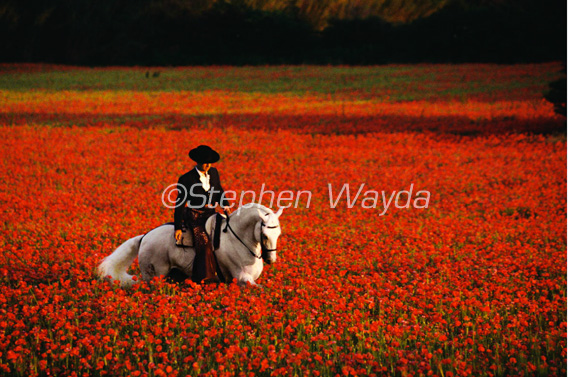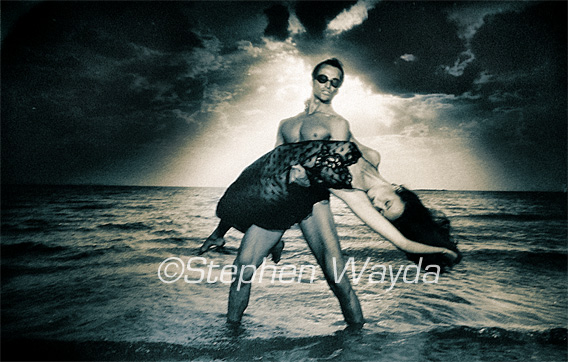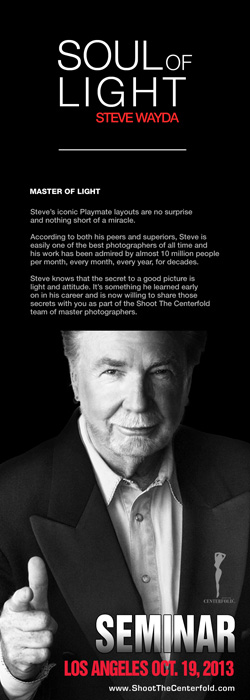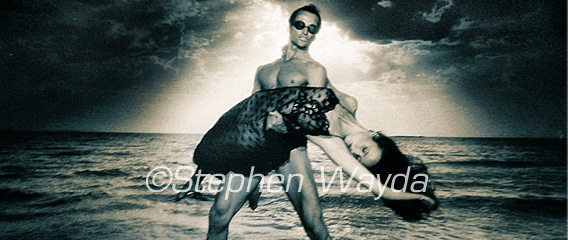There is no truth. There is only perception
Over the years of my photography career I’ve owned from one to ten cameras at any given time. The equipment has ranged from a simple Polaroid camera to a Leica rangefinder, to an arsenal of Hasselblads, three Nikons hanging around my neck while I run around on location, multiple Phase One systems, 8×10 view cameras, consumer grade Canon film cameras I had personally modified, to the current Canon digital cameras I now use. It’s easy to get caught up in the tech and specifics of your favorite gear. And while I agree that having reliable, professional gear is always the best way to go, thinking it will make you a better photographer is nothing more than a rationalization that photographers tell themselves that their photographs will improve as the equipment improves. The truth is that upgrading your photo gear is never the answer if you’re unhappy or dissatisfied with your work.
The problem isn’t with your gear, it’s with your eyes – your perception, to be specific. The camera is a just a box that captures the image in front of the lens.
It’s a condition common to many photographers; some know they have it, others don’t have a clue. We become so accustomed to the world around us that everything starts looking ordinary to us. We lose the ability to see things as they really are and rely on our personal visual interpretation. We get so used to seeing the same trees, the same people, the same buildings and taking pictures in the same way that their aesthetic appeal gets lost and our desire to photograph it disappears along with it.
There’s a profound quote I like. It’s “Genius is seeing patterns where others see only chaos and random objects.” I don’t think of myself as a genius, but there is genius in the message… pay attention to what’s really there. There are two ways of doing this; step back or step forward. Step back and see how everything fits together, not just the object of your photograph. Everything is part of something else and all you have to do is find how it fits together. Step forward, examine each facet and angle of an object, and see the individual pieces and textures that make the whole.

Look No Further
I often hear photographers complain that they’ve shot everything in their area and the only way they’re going to find something new is if they travel somewhere else. I’ve been around the world, seen many things, talked to all kinds of people. There is always something new to photograph, be it in an exotic location or in your own backyard. There are so many things worth taking pictures of that are right underneath your nose and you can’t even see it because you don’t think it’s worth looking at, or because you’ve already done it so many times before.
The problem is that photographers stop asking things like “Why,” or “What if?” If you want to access and develop your perception and the ability to see patterns, you’ll first have to re-ignite your curiosity. Think about the things you take for granted, especially the small things. Look at what’s around you and consider not only what they mean to you, but how they fit into their world. Just what does this have to do with taking pictures of beautiful models in various stages of undress?
When you learn to see your world in new ways, it’ll carry over into other things in your life, especially anything involving creativity like photography, music, writing and art. Your model won’t just be a model anymore. You’ll learn how to put her where she “fits” and how she is supposed react in her surroundings. Glamour and centerfold/nude photography is nothing more than finding beauty in everything, knowing where it goes and putting it there.
The Extraordinary in the Ordinary
Anybody can be a photographer. Anyone can learn which button to push and which settings are best. And while there are rules, It gets harder to know what rules of good composition mean and how to correctly pose a model. Regardless, some of these rules are made to be broken. It’s only when you begin to apply your unique interpretation of seeing the world around you that you’re going to be able to tell which rules can be broken from the ones that have to stay in place.
If you can do this, you’ll be doing what every photographer aspires to do: making photos, not just taking them.
Photography is subjective. Creativity is objective. Curiosity is the subjective part of us looking at things and deciding if we like them or not. The reason many people get “photographer’s block” is that they can’t get past their perceptions of the objects and conditions they face on a regular basis. They rationalize their judgments to support their pre-existing beliefs. In other words, people decide something is boring, so that’s the way they see it.

Objectivity means having the ability to look at all sides openly and dispassionately. If you look at an object with pre-conceived notions, you’re not going to be able to see anything new. The key to being objective is to be fair and open-minded. I know that this sounds like only so much psycho-babble, but it works because it’s how our minds work. Another quote – you might have heard this one already – is that “nothing is either good or bad, but thinking makes it so.”
Watch Those Close-Ups!
 Once you’ve gotten curious and in a fair, non-judgmental state of mind, it’s critical to step back and see the entire picture, and I mean everything. It’s only then that the patterns emerge. When I was in Paris, I got the chance to visit the Musée d’Orsay. It’s famous for its collection of impressionist and post-impressionist masterpieces… Monet, Manet, Degas, Renoir, Cezanne, Gauguin, and Van Gogh. I had always wanted to see one up close. When I got there, I stepped in the middle of these exhibition and was overwhelmed by the beauty of the work. However, when I stepped closer to each piece, you could really see brushstrokes and an astounding ability to move and position mere paint on a canvas. If you saw these paintings up close, you would never have figured out a red blob of paint was a flower, or a nondescript, black smear was actually a bird in flight.
Once you’ve gotten curious and in a fair, non-judgmental state of mind, it’s critical to step back and see the entire picture, and I mean everything. It’s only then that the patterns emerge. When I was in Paris, I got the chance to visit the Musée d’Orsay. It’s famous for its collection of impressionist and post-impressionist masterpieces… Monet, Manet, Degas, Renoir, Cezanne, Gauguin, and Van Gogh. I had always wanted to see one up close. When I got there, I stepped in the middle of these exhibition and was overwhelmed by the beauty of the work. However, when I stepped closer to each piece, you could really see brushstrokes and an astounding ability to move and position mere paint on a canvas. If you saw these paintings up close, you would never have figured out a red blob of paint was a flower, or a nondescript, black smear was actually a bird in flight.
I learned an important lesson that day: Sometimes for things to make sense, you have to step back – ALL the way back. It’s easy to see them when they’re around you, but the minuscule details are almost impossible to see when you’re a part of it.
Step back from yourself and clear your mind to see things for what they were instead of rationalizing why things aren’t working out as you expected. It will turn out that your situation is relatively simple to solve. You will not have found it out if you hadn’t looked at the overall picture and how you fit into it. Just like impressionist paintings, you can’t figure out how things should be unless you sit still, clear your mind, take a good look and be objective and fair in your perception.
Good Shooting!
~ Steve Wayda
Got questions? Come see me at our Oct. 19th, L.A. seminar.

© 2013 Copyright ShootTheCenterfold.com. All rights reserved



















